L’exploitation agricole de l’oncle Fraise (논산 딸기삼촌농장)
5.3Km 2021-05-28
423-9, Byeongsa-ri, Noseong-myeon, Nonsan-si, Chungcheongnam-do
+82-10-3884-4349
Comme tous les autres agriculteurs de fraises, l’oncle Fraise a, au début, fourni ses produits à des distributeurs détaillants comme les marchés, les centres commerciaux et les magasins discount. Cependant il a décidé de changer cela, et maintenant il rencontre les consommateurs lui-même sur ses terres et fournit directement ses fraises. Sans détaillants intermédiaires, l’oncle Fraise est maintenant capable de fournir des fraises de la plus grande qualité à des prix plus intéressants.
En 2006, l’oncle Fraise a commencé à gérer un programme d’activité dans son exploitation. Initiallement, il n’y en avait que 8, maintenant le nombre a sauté à 44. Durant des années, les terres de l’oncle Fraise ont fait pousser des fraises basées sur des méthodes agricoles totalement naturelles et respecteuses de l’environnement. L’oncle Fraise est un agriculteur determiné qui pense que le plus important est d’offrir les meilleurs fraises à ses clients. Avec cela en tête, il fait de son mieux pour faire pousser des fraises de grande qualité et bonnes pour la santé en utilisant des pesticides naturels. Ses produits sont certifiés bio.
Temple Musangsa (무상사)
5.6Km 2023-04-13
129, Hyangjeoksan-gil, Eomsa-myeon, Gyeryong-si, Chungcheongnam-do
+82-42-841-6084
Le temple Musangsa est un lieu réputé notamment comme lieu de séjour pour les moines étrangers qui viennent effectuer des séjours pour pratiquer le Ganhwaseon (une sorte de bouddhisme zen). Il est aussi possible de participer à des programmes de 3 mois autour des traditions bouddhistes en Corée.
Les bouddhistes mais aussi les visiteurs peuvent prendre part à des activités de méditation pour une durée d’une semaine. Pendant cette période de méditation, les visites du public sont limitées. Le temple Musangsa, un temple zen international spécialement conçu pour les étrangers, fut créé par le moine Sungan en mars 2000 dans le but de promouvoir le bouddhisme zen coréen parmi le public étranger tout en encourageant et aidant les religieux non bouddhistes à faire l'expérience pratique du concept ‘zen’.
Situé au pied du moint Gyeryong, le temple est entouré par une forêt de pins, rendant le lieu parfait pour apprécier la beauté naturelle et originelle des forêts en Corée.
Pont suspendu Tapjeongho à Nonsan (논산 탑정호 출렁다리)
10.0Km 2022-05-06
665, Bujeok-ro, Bujeok-myeon, Nonsan-si, Chungcheongnam-do (충청남도 논산시 부적면 부적로 665)
Le pont suspendu Tapjeongho, situé près du deuxième plus grand lac de la région Chungcheongnam-do, se distingue par ses eaux claires du mont Daedunsan. Le site est particulièrement apprécié pour ses couchers de soleil et l'offre en sports aquatiques.
Temple Gapsa (갑사)
10.1Km 2021-04-15
567-3, Gapsa-ro, Gyeryong-myeon, Gongju-si, Chungcheongnam-do
+82-41-857-8981
Le Temple Gapsa se situe dans le Park National du Mt. Gyeryongsan, à 19km environ de la ville de Gongju-si. Il a été établi par le moine Adohwasang, en 420, durant la Période Baekje (234-678), et il est fameux pour avoir de nombreux trésors culturels. Une fois que vous passez le parking de voitures, vous arrivez à une place de marché, le guichet des tickets, et ensuite, il faut traverser la Porte principale, Iljumun. Du parking jusqu’au Temple Gapsa, il y a moins de 2km, mais la route passe par un endroit connu comme une forêt Ori. Au printemps, les fleurs des abricotiers et en été, la forêt luxuriante et verte couvre toute la région. En automne, les feuilles se tintent de toutes les couleurs pour créer une vue spectaculaire de la route. Lorsque vous entrez au Temple Gapsa, la première chose qui vous frappe, c’est le hall de conférences du temple. Il y a une grande enseigne avec les termes inscrits en bleu, “Gyeryonggapsa”, à l’entrée du bâtiment. Normalement, il n’ y a pas de salle de conférences dans les temples, et c’est une part du caractère unique du Temple Gapsa de posséder un tel bâtiment. A un côté du hall de conférences, il y a le Dongjonggak qui abrite la cloche en cuivre Dongjong. Daeungjeon, le bâtiment principal, se trouve derrière le hall de conférences. Si vous tournez vers la gauche, il y a les bâtiments Pyochungwon et Palsangjeon. Pyochungwon est où on gardait les portraits des grands moines Yeonggyu, Samyeong, et Seosan, qui a également servi comme soldats-moines durant l’Invasion Japonaise. Le grand prêtre Yeonggyu, spécialement, avait pris le devant pour amener les moines à devenir soldats. Pyochungwon a été créé en leur honneur. Plus haut que Pyochungwon, nous avons le bâtiment Palsanjeon. Il a été appelé ainsi parce que Palsangdo, sur lequel la vie du Bouddha avait été divisée en huit parties et décrites avec des images, y est préservée. Le point où ces deux bâtiments se trouvent, est le plus bel endroit pour les feuillages automnaux. Si vous continuez la route en passant par le Temple Gapsa, le chemin d’escaliers du Mt. Gyeryongsan apparaît. Un peu plus loin de Gapsa, il y a une Maison de thé traditionnelle et la vallée à côté, est aussi très belle. A travers la vallée, vous pouvez voir la Tour Gongutap. Si vous poursuivez votre route en allant vers un côté de la Tour Gongutap, le bâtiment Daejeokjeon apparaît, tout comme Cheoldanggan. Cheoldanggan est ce qui est élevé entre deux pilliers Danggan. Originellement, il y avaient 28 Cheoltongs connectés les uns aux autres, mais quatre d’entre eux ont été cassés durant le règne Gogong, et il n’en reste plus que 24 à l’heure actuelle. Le Temple Gapsa est fameux pour sa beauté en automne. Les feuilles d’érable et les arbres Gingko, et d’incomptables autres arbres avec leurs grands feuillages sont mélangés ensemble, et ils créent un réel paysage automnal naturel et spendide.
Parc National du Mt. Gyeryongsan (계룡산국립공원)
11.2Km 2021-09-06
327-6, Donghaksa 1-ro, Banpo-myeon, Gongju-si, Chungcheongnam-do
+82-42-825-3002
Le Parc National du Mt. Gyeryongsan s’étend au travers de la ville de Daejeon, Gongju et le district de Nonsan.
Cette montagne magnifique s'élève à 845,1m au-dessus du niveau de la mer et a été désignée parc national en 1968. Le nom du Mt. Gyeryongsan provient du fait que ses crêtes ressemblent au sommet d'une tête d'un coq.
*Cette montagne comporte 15 sommets, dont le somment principal Cheonhwangbong (845,1m) puis Sambulbong, Sinseongbong, Gwaneumbong, ec. La montagne est célèbre pour ses nombreux endroits à visiter avec ses structures de roche très diverses sur le versant ouest, les chutes d'eau Yongmun, mais aussi à l'est avec les chutes d'eau Eunseon puis au sud avec les chutes d'eau Amyongchu et Sosyongchu.
Au printemps, les fleurs de cerisiers sur la route montagneuse du temple Donghaksa sont très appréciées des randonneurs alors qu'en été, la luxuriante vallée Donghaksa est une étape privilégiée des visiteurs. En automne, les arbres d'érable se teintent de couleurs typiques de l'automne autour du temple Gapsa alors que l'ensemble formé avec les chutes d'eau Yongmun constituent une sorte de toile grandeur nature. De plus, la couronne de neige qui couvre le pic Sambulbong en hiver offre une vue simple et majestueuse.
Le mont Gyeryongsan abrite aussi beaucoup d'animaux rares et divers types de plantes et possède une histoire riche en légendes mystérieuses et en trésors culturels. À l'est, on trouve le temple Donghaksa, au nord-ouest, le temple Gapsa, au sud-ouest, le temple Sinwonsa et au sud-est, le temple Yonghwasa . Chacune des vallées dispose d'étangs et de chutes d'eau qui forment une très belle harmonie.
Sutonggol du Mont Gyeryongsan (계룡산 수통골)
14.2Km 2023-01-17
47-3, Sutonggol-ro, Yuseong-gu, Daejeon
Ce sentier panoramique est un parcours symbolique de Sutonggol, une zone qui fait partie du parc national du Mont Gyeryongsan, célèbre pour ses vallées à proximité du centre-ville. Ici, l'Homme et l'eau se rencontrent au milieu des fantastique montagnes
Vous pouvez profiter de la fraîcheur créée par les chutes d'eau de Sutong et l'atmosphère romantique de la 'Vallée de la poésie et de la peinture'. Le parcours mène au merveilleux pic de Geumsubong, non loin des grandes villes. Avec son parcours non abrupt, le sentier est prisé par de nombreux visiteurs toute l'année.
Pont Jinjamhyanggyo (진잠향교)
14.8Km 2024-12-13
대전광역시 유성구 교촌로 67
+82-42-611-2078
L'école confucéenne Jinjamhyanggyo a été érigé afin de diffuser le savoir des érudits et d'éduquer le peuple en 1405 (sous le règne du roi Taejong). Le bâtiment restant de la construction originale se nomme Daeseongjeon alors que le site abrite des tabletttes ancestrales.
Temple Jagwangsa (자광사)
15.7Km 2021-09-07
649, Hakha-dong, Yuseong-gu, Daejeon-si
+82-42-822-9220
D’après la légende, Hakhadong était un lieu où résidaient les divinités quand elles descendaient des cieux. Quand le temple de Jagwangsa fut construit sur ce site, Song Siyeol considéra cela comme un signe de bonne fortune, et dans l’espoir d’élever des jeunes gens talentueux pour servir le pays, il construisit une école de village près du temple et y éduqua ses élèves. Durant la construction de l’école, il planta également un genévrier. En entrant dans le temple, les visiteurs trouveront la pierre commémorative de Seongjeonnyeongdangji sur leur gauche. Cette pierre a été a été placée là en mémoire de Song Siyeol et de son école qui possède une grande valeur historique. Près de la pierre commémorative se trouve un étang où les carpes nagent paresseusement autour des fleurs de lotus. A gauche de l’étang se trouve une grosse cloche qui sonne chaque jour 28 fois le matin et 33 fois l’après-midi, et à droite se trouve le principal hall du Dharma. Au-delà de la barrière de bambou, on peut trouver un puits, une salle d’eau et des cabines de douche. L’atmosphère sereine de l’endroit apporte la paix de l’âme, permettant aux visiteurs de se relaxer et de se sentir à l’aise. A l’intérieur du temple se trouvent enfin des artefacts comme le Beopgo, le Mogeo et l’Unpan, qui étaient utilisés par les pratiquants du Bouddhisme pour purifier leurs esprits de la douleur et du doute. Le bâtiment principal du temple est une imposante structure de deux étages, à l’intérieur de laquelle les visiteurs peuvent apercevoir des panneaux portant diverses inscriptions accrochés au mur.
Musée municipal de Daejeon (대전시립박물관)
17.5Km 2021-02-01
398, Doan-daero, Yuseong-gu, Daejeon
+82-42-270-8600
Le
Musée de Daejeon a ouvert ses portes le 16 octobre 2012 en tant qu'espace
de culture des citoyens de la nouvelle ville Doan. Le musée est disposé
de salle permanente, de salle d'exhibition spéciale et de salles de promotion
du centre ville. Ces différentes salle exposent chacune des vestiges
de thèmes uniques. Il y a également de divers programmes dont
les résidents peuvent y paticiper.
Lee Hwa Won Chinese Restaurant (이화원)
18.1Km 2024-12-11
32, World Cup-daero, Yuseong-gu, Daejeon
+82-42-823-0022
Lee Hwa Won opened in 1998 at the World Cup Stadium. Its location makes it easy to find and there is ample space for parking. This Chinese restaurant offers a variety of royal Chinese cuisine and attracts many family groups as well as other types of customers through its connection with the Yuseong Special Tour Zone. On the menu are hundred types of a la carte items and set menus, so the restaurant is appropriate for various special occasions and gatherings.

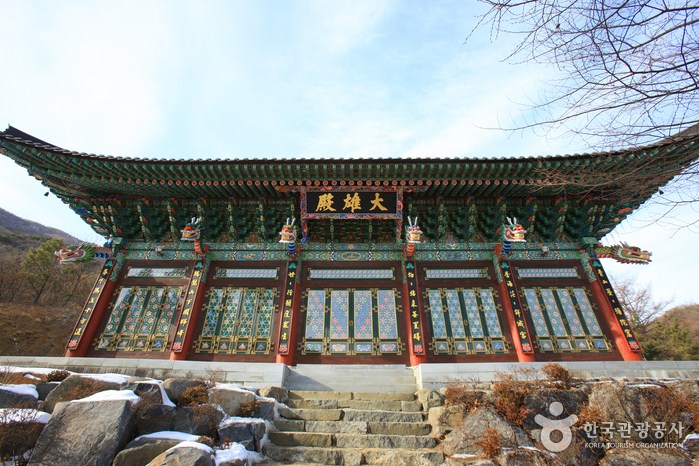

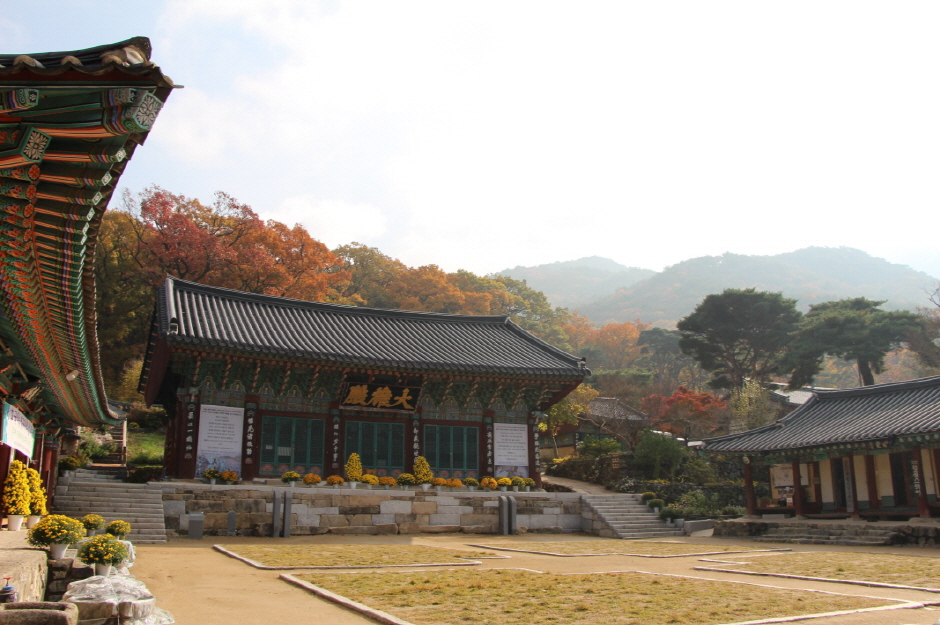
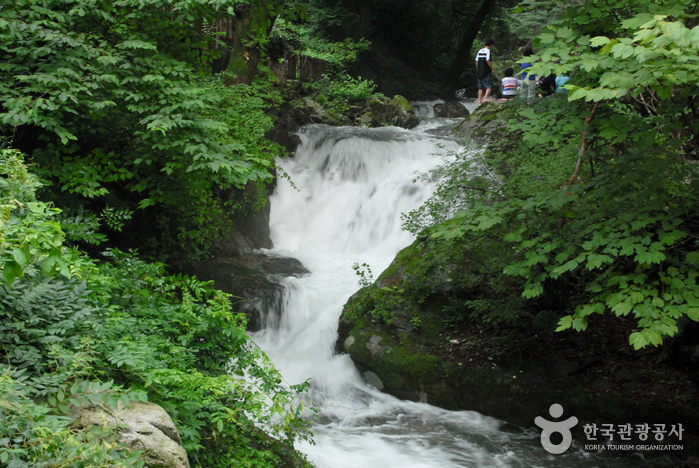
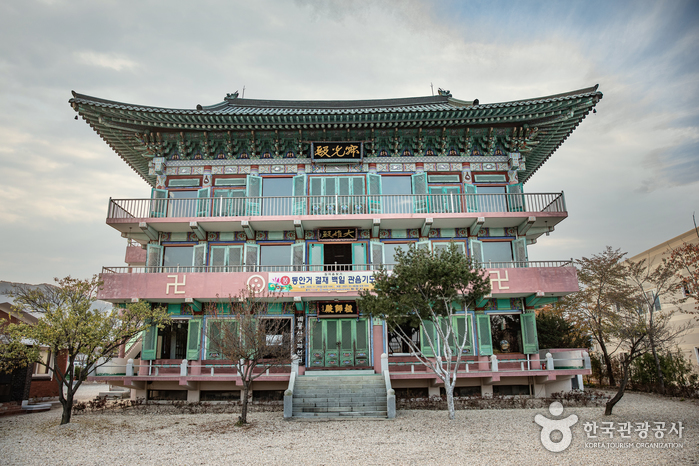
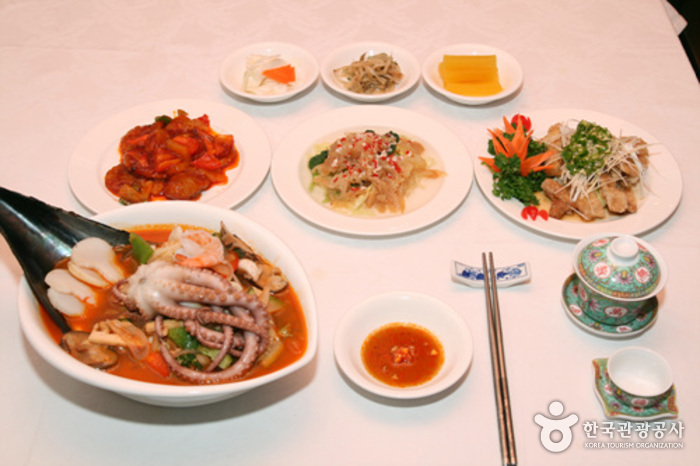
 Français
Français
 한국어
한국어 English
English 日本語
日本語 中文(简体)
中文(简体) Deutsch
Deutsch Español
Español Русский
Русский